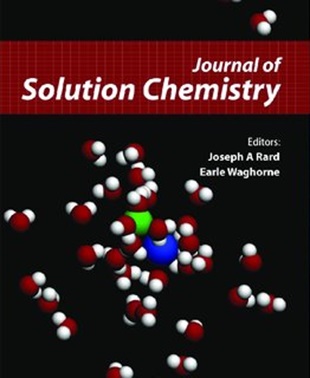The Kinetics and Mechanism of Phase Transfer Catalyzed Oxidation of Some Aliphatic Aldehydes by Ethylenediammonium Dichromate in Dimethyl Sulfoxide Medium
Abstract
The phase transfer oxidant ethylenediammonium dichromate [enH2Cr2O7] has been employed to investigate the kinetics of aliphatic aldehyde oxidation in a dimethyl sulfoxide medium. Rate constants were calculated in the temperature range 293 K–323 K under pseudo-first-order conditions concerning oxidant. The kinetics of the reaction are investigated using a conventional UV–Vis spectrophotometric technique. The order is less than two for the aldehydes, and the rate of reaction increases as the concentration of [H+] increases. The fractional order dependency with respect to aldehydes confirms the binding of oxidant and substrate to form a complex before the rate-determining step. The existence of a primary kinetic isotope effect, kH/kD = 5.22 at 313 K for acetaldehyde (ratio of rate constants for protio- and deuterio- acetaldehyde) indicated a C–H bond cleavage rather than C–C bond cleavage. Isokinetic temperature and several other thermodynamic parameters are studied. From the experimental data, the formation of an unstable cyclic transition state followed by intra-molecular hydride-ion transfer has been proposed. All the aldehydes are oxidized by the same mechanism, according to the linear isokinetic correlation. The oxidation product is the corresponding carboxylic acid.


 求助内容:
求助内容: 应助结果提醒方式:
应助结果提醒方式:


